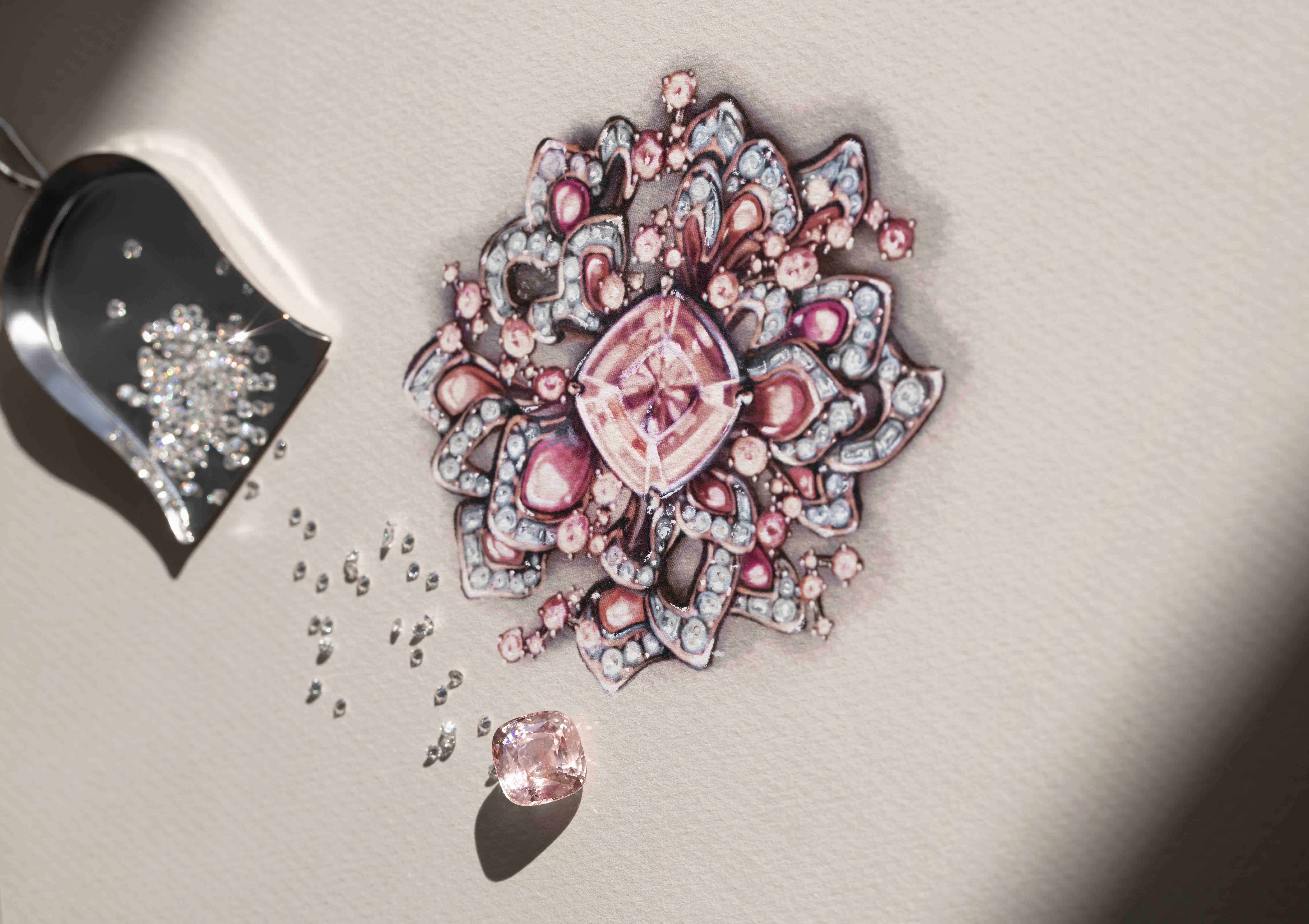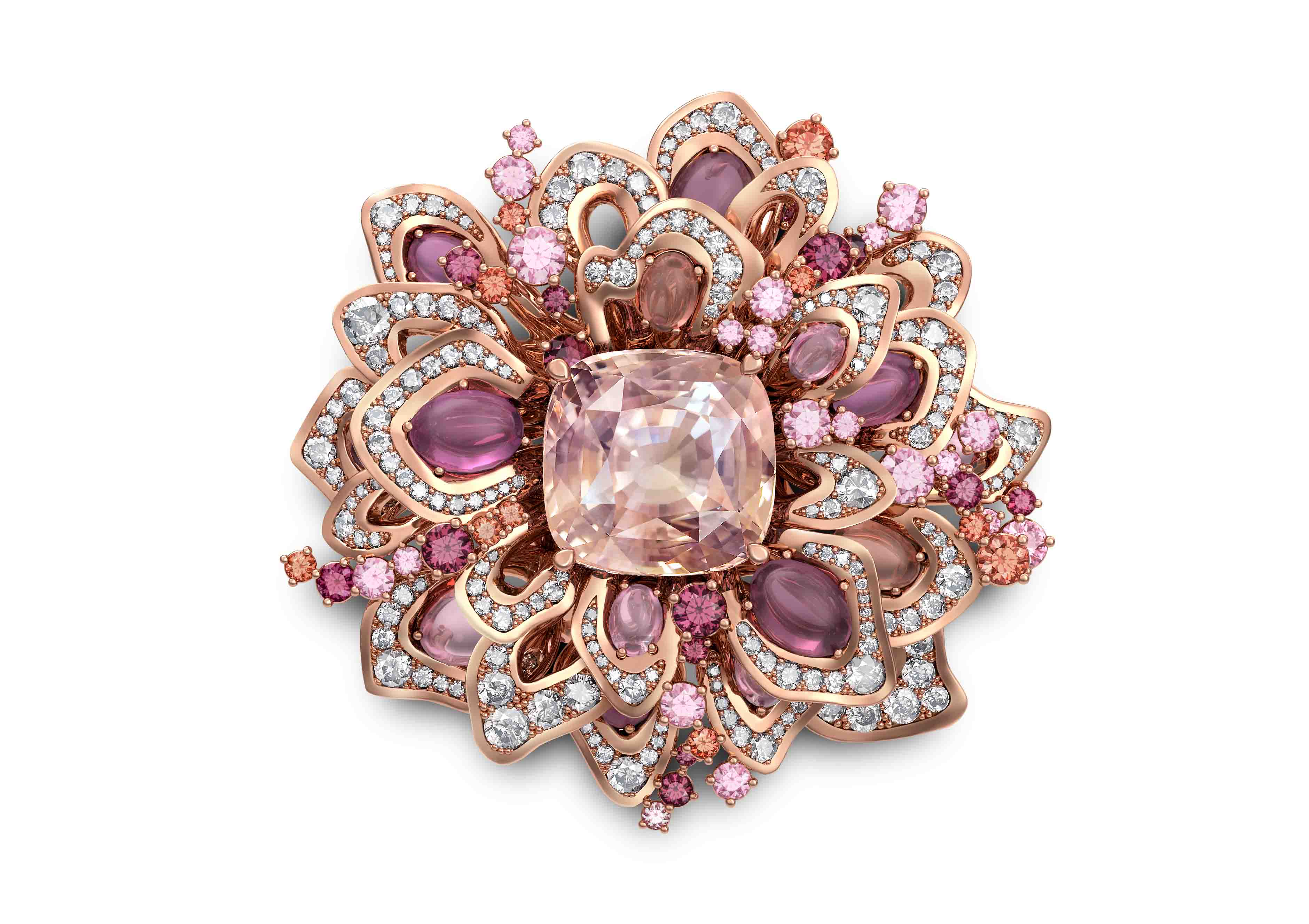Jewels
That perfect sunset blend of orange and pink
Gübelin takes us to the Gem Island with a Sri Lankan-inspired one-off haute joaillerie ring starring a rare padparadscha sapphire
December 3, 2019 By Rachael Taylor
The faultless melding of pink and orange that creates the sought-after hue of a pitch perfect padparadscha sapphire is a thing of wonder to behold. Warming, energising and utterly enticing.
It is the to the padparadscha sapphire that Gübelin has paid tribute in its latest high jewellery launch, a single ring titled Rising Lotus. At the centre of this exceptional one-off ring is a 14.52ct Sri Lankan example of the gem that won over Princess Eugenie, finding a permanent home on her wedding finger.
The design of the Gübelin Rising Lotus ring finds its inspiration in the homeland of the padparadscha sapphire, Sri Lanka. Known as Gem Island (or Ratna-Dweepa), Sri Lanka was the first place that the gemstone was discovered and remains the preferred source for gem connoisseurs. The stone’s name is derived from the Sinhalese word padmaraga , which translates as ‘lotus coloured’ and so the ring uses 24 gem-set leaves, laden with cabochon and faceted sapphires and 550 diamonds, to recreate the bloom in gold.
With the launch of this special ring, we speak to Gübelin president Raphael Gübelin and Helen Molesworth, director of the Gübelin Academy, about its creation and the gemstone that inspired it.
What is it about the Padparadscha sapphire that makes it so special and sought after?
HM: “Sapphires come in a wide range of colours, just like a rainbow. The most known colour of sapphire is blue, of course, but the delicate colour that characterises a padparadscha sapphire is the rarest – gentle pinkish-orange or orangey-pink.”
What gemmological quirks give the stone its trademark colour?
HM: “It is the pastel orangey-pink to pinkish-orange colour that defines the padpardscha. To qualify as a padparadscha, the sapphire has to feature a combination of both pink and orange hues in a low to medium saturation. It is the delicate mix of colours that make it so rare to find. If it doesn’t have the secondary pink or orange, then it could easily be an orange or a pink sapphire. If it is too strongly saturated, then it might not be considered the traditional pastel colour of padparadscha by Gübelin standards. The very special colouring is caused by trace elements, like chromium or iron, as well as a specific crystal characteristic called colour centre. Very seldom, these phenomena occur in nature together, creating this colour combination, which explains the rarity of these gems.”
Where is the stone best sourced from and where does Gubelin get its Padparadscha sapphires?
HM: “Originally, padparadschas were first found in Sri Lanka, so this ‘Isle of Gems’ is the historic origin. Even the name padparadscha is taken from the Sinhalese or Sri Lankas word, padmaraga, meaning lotus-coloured; the lotus, or water lily, being typical Sri Lankan plant. In the 20th century, sapphires were found on Madagascar as well, including the padparadscha variety. Gübelin Jewellery selects padparadscha sapphires from these two origins.”
How rare are Padparadscha sapphires?
HM: “They are the rarest sapphire variety of all. Especially gem-quality padparadschas of larger sizes are very rare.”
Do they make for a good investment?
HM: “It us not at us to predict the price of a gem – the market does. As mentioned, the padparadscha is the rarest sapphire variety and the demand is rising, so high demand meets low supply.”
Are there any special considerations connected to Padparadscha sapphires when designing around these gems?
RG: “We combine the padparadscha sapphire with varieties from the sapphire family, so we set them together with pastel-coloured fancy sapphires. They enhance the soft colour of the padparadscha. Brilliant-cut diamonds set sparkling highlights and add some fire. And, of course, padparadscha goes well with ruby. The ruby itself is the red variety of corundum, which means [it is] part of the sapphire family. The ruby stands for love and passion and to us, it perfectly symbolises our deeply inspired philosophy combining beauty, knowledge and artisanship in a unique way [which is why the ruby is Gübelin’s signature gemstone]. The setting has to be chosen specifically for each single gemstone. We tend to use prongs so the light works well with the delicate colour, but this is not set in stone. You have to respect the gem. We like to combine the soft colour of the padparadscha with the warm colour of red gold. This highlights the gem and creates a harmonious arrangement.”
Authenticity is central to the way you work. How can one of your clients be reassured about the genuineness of one of your Padparadscha sapphire?
RG: “All important gemstones used for Gübelin jewellery are accompanied by a Gübelin Gem Lab Report. The Gübelin Gem Lab is an independent entity of the House of Gübelin and worldwide renowned for its expertise.”








Comments:
Posted by: angelguzman
nail saved wedding dress cakes ring xxi nails car wolf rose doll house butterfly watch
Name
Email (will not be shared)
Your Reply